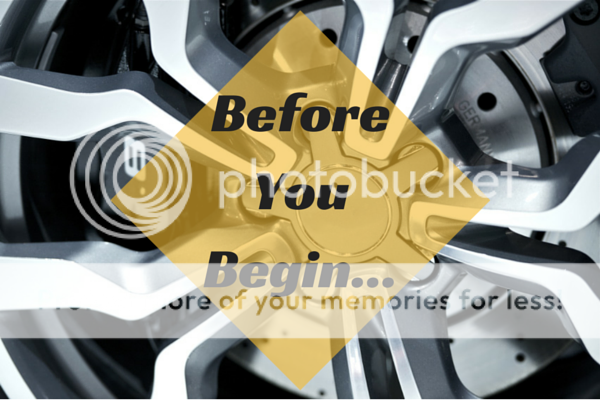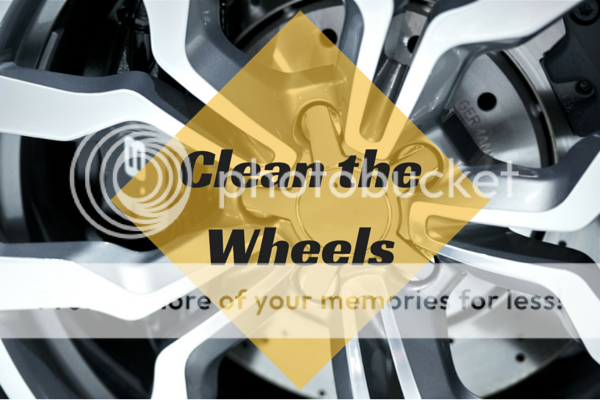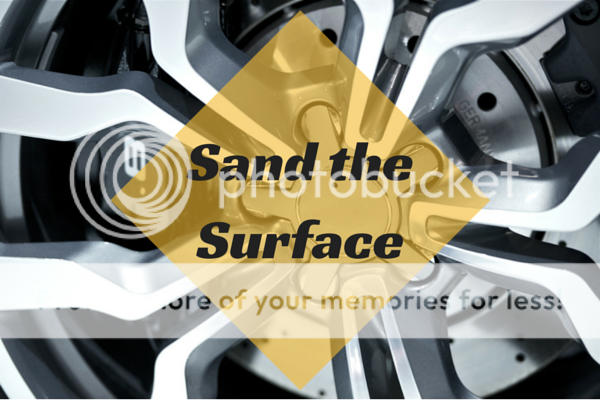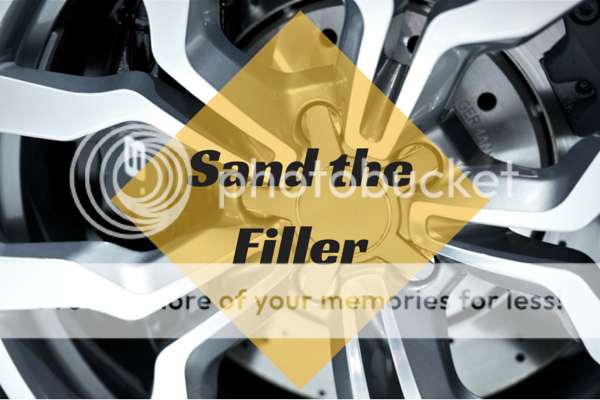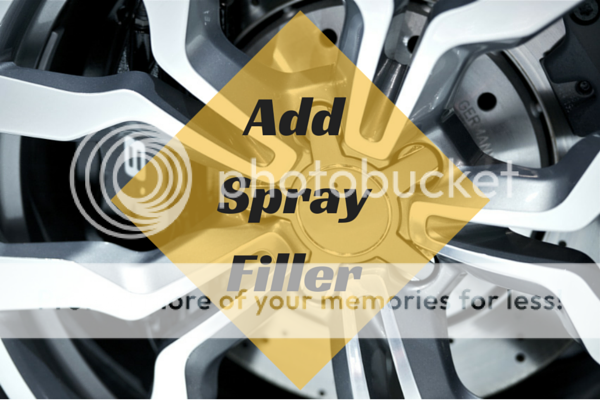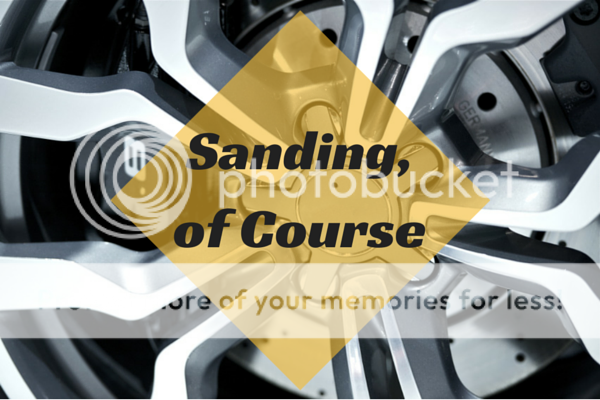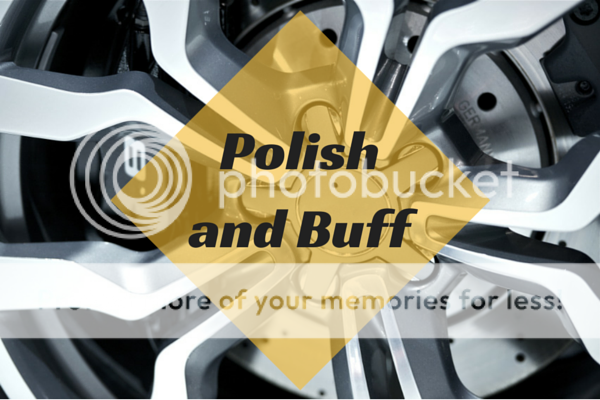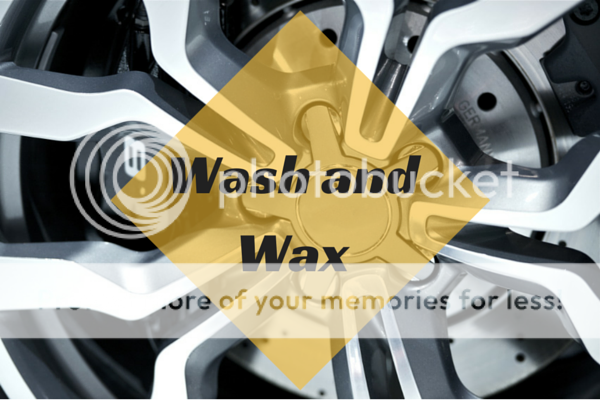The Must-Have Alloy Wheel Repair Guide
Posted on: 20/03/2014If your alloy wheels are in need of a face-lift, you may feel brave enough to take on the task yourself. However it's important to know that refurbishing alloy wheels is very time consuming, by which I mean it takes up to two weeks for the final coat to harden - so if you haven’t got the time, patience, or a spare set of wheels to use in the meantime, it may be better to go to a professional. If this doesn't phase you and you’re still willing to do it, don’t rush, be patient and thorough, and read this before you even start…
...here are a few essential tips
For the task of refurbishing and repairing your alloy wheels, you’ll need a spacious, well-ventilated workshop and the correct protective gear, especially for the sanding and spraying.
Before you begin I suggest getting the tyres removed; it makes things so much easier. It’s not imperative though - just make sure you mask the tyre up where needed. I am also re-spraying the insides of the wheel; this does not have to be done, you can just do the outer face of the wheel if you like. All products that I used can be purchased from any good store.
· Comprehensive protective gear
· Bucket, brush and a sponge
· Detergent
· Wet and dry paper (120 - 1500grit)
· File, screwdriver, etc
· Filler (P38 or equivalent)
· Spray Filler
· Thinners
· Microfibre Cloths
· Primer
· Colour coat paint
· Clear Lacquer 500ml
· Thinners
· Detergent
· Hair dryer
· Polishing Compound of your choice
· Wax or Sealant of your choice
· Masking Tape
· Kettle
· Tea
· Semi-skimmed Milk
·
Step 1: Cleaning
Take off any lead weights with a flat screwdriver. Ensure the wheel is totally clean. You will obviously need to get the wheels rebalanced before you put them back on the car.
Step 2: Filing
For heavy curbing you will most likely need to get rid of the worst of the burring with a file. Don’t try and completely remove the curbing, or you are in danger of altering the shape of the wheel and we’ll be filling in the worst of it later. You just want to get rid of the bits of metal now standing proud due to dings, dents, gouging and corrosion.
Step 3: Sanding
For the paint to stick properly, you will need to abrade the entire surface of the alloy. Essentially, you want to achieve a matte finish, 600 grit should work for this, with plenty of water and detergent to prevent the paper from clogging up. Be sure to take it back to the bare metal where there are any signs of corrosion. Spend a lot of time on the rim, as this may well be the worst affected, If you choose to do the insides as well, don’t forget to sand away the dirt there too.
Step 4: Filler
Before filling, make sure the wheel is both cleaned spotless and bone dry. Also make sure the curbing marks are free from grime and dirt to allow for proper adhesion. P38 body filler will do, but ‘chemical metal’ is just as good. Follow instructions and allow the filler at least 24hrs before sanding.
Step 5: Second Round of Sanding
Once the filler is totally dry, you can then start sanding. You are aiming to sand the filler back to match the shape of the rim. 400grit is good here, using plenty of water, you may want to use a rougher paper at first, but carefully. Take you time here, run you thumb over the area regularly until it feels uniform with the rest of the wheel. Don’t panic if you discover you have used too little filler or accidentally sanded too much, just repeat from Step 4; patience and application.
Step 6: Spray Filler
This is for the really fine holes, but well worth doing, as it gives you a professional evenness, overall. Before spray filling, again make sure the wheel is spotless and bone dry. The aim here is to attend to the small imperfections left from sanding the filler.
Thereafter, follow instructions on the filler can, three even coats, not too light but certainly not too heavy, just to fill any imperfections, leaving perhaps 15 minutes between coats. It’s a good idea to soak the nozzle in thinner between coats, just to prevent blockages, even after clearing the nozzle as advised on the can (don’t say I didn’t warn you).
Once you have put on the final filler coat, the rim should look all one colour. You’ll soon notice if there are any defects left. If small, they may sand out, but allow the filler at least 24hours to dry before attempting to do so. Have a cup of tea.
Step 7: Time for More Sanding
The aim here is to sand the spray filler flat, sanding all the way back to the metal in most areas. Try and do this without undue localised pressure- focusing on one area- or you will create dips that will show up later. Painstaking though it is, a good way to check is to dry the area so you can see properly. If you need more spray filler, just repeat from step 6. Get this stage right and you will be rewarded with the end result.
Step 8: Priming
Again, ensure the wheel is clean. Choose a primer that most closely relates to your finished colour: grey for silver, white for white, etc. Not rocket science, follow the instructions on the can; three light coats, allowing 15 minutes between each, spraying the inside of the wheel first and then the face, not forgetting to spray the outer most edge of the rim, always attempting for even coverage, especially in the awkward places.
Step 9: Sanding Again
Before sanding allow at least 24hrs for the paint to dry. The aim here is to achieve a consistent, smooth base to paint over. 800 grit with plenty of water; it’s important that the whole wheel is sanded flat, as any rough patches will show up in the finish.
Be gentle and even, do your best to get in the tight awkward areas, but bear in mind the paint will be thinnest here so be very careful not to wear through the paint. You don’t need to be too beady about the wheel interior, indeed, some don’t bother with this step at all.
Step 10: Colour Coat
Clean and dry the wheel. Again, follow the instructions on the can, I sprayed three light coats, allowing 15 minutes between each, spraying the inside of the wheel first and then the face, not forgetting the rim, working for an even coverage across the whole surface, awkward or not.
Aim only for a matt finish for now. Make sure the entire wheel looks the same colour, adding light coats until it is.
Step 11: Clear Lacquer
Allow at least 24hrs for the paint to dry. Don’t bother washing the wheel, nor sand the colour coat, or you will reduce the final effect. Just ensure there’s no dust on the surface, perhaps usng a hair dryer to blow clean, however, don’t touch the wheel either, as this will transfer grease onto it.
Follow the instructions on the lacquer can; three coats, the first one being the lightest, then slightly heavier for the next two. You are not aiming for a gloss finish here either, as in attempting to do so will make the lacquer run. If it dries with some ‘orange peeling’, that’s ok at this stage.
15 minutes between each coat, wheel interior first, then did the face, not forgetting to spray the outermost rim edge. Any orange-peeling can be sorted once it’s dried.
Step 12: That's Right, More Sanding
A potentially rather lengthy process of sanding and polishing ahead, but only if your finish is dull or pockmarked. However if you have achieved a good enough finish that you are happy with, this process may not have to be done.
Before starting the sanding and polishing process, I would advise you let the paint dry thoroughly. Paint cans recommend a fortnight and there’s no reason to suspect them of being wrong. It’s worth noting that professionally, paint finishes are baked to produce a truly hardened end result, so two weeks curing isn’t so hard to accept, with this in mind.
1500 grit paper, again using plenty of water with detergent. Sanding at this point may seem counter intuitive, having taken such pains to create a finish, but we are aiming to lose the orange peel from the lacquer. The fine grade of grit should also warn you not to be pressing at all hard; you really don’t want to be pushing through the lacquer coat by any means.
Again, dry the wheel periodically to see how much paint you are taking off and only sand until you have lost the pimpling. There’s no need to do the wheel interior. When you’re done, you should have a totally smooth, matte finish.
Step 13: Polishing Compound
Clean and dry thoroughly. G-3 compound or super resin polish whatever your polish of choice... Follow the instructions on the bottle, using a microfiber cloth to work the compound in, with in a gentle circular motion on a small area, until the compound goes transparent.
Buff with a new cloth (some may need to be left to dry before doing so), until the whole wheel looks shiny, it may take a while, but the results will be worth it. Be aware though that you are removing paint, so don’t be over-zealous and undo all your good work. Darker paints may take a little more polishing before a gloss finish is attained.
Step 14: Waxing
Wash and dry the wheel. Where have you heard me say that before?
It’s totally up to you what product you use, any car body wax will be fine, although some people use Wheel Armour which provides a better protective barrier. Following the instructions on the bottle, rub onto the surface of the wheel and then buff. The surface will feel very slippery and smooth afterwards.
It may even be worth re-masking the rims and spokes before the tyres are replaced, to prevent any marking in the execution. Be sure to re-wax the wheels periodically, to prevent brake dust adhesion and corrosion going into the future.
Another cup of tea, methinks.
